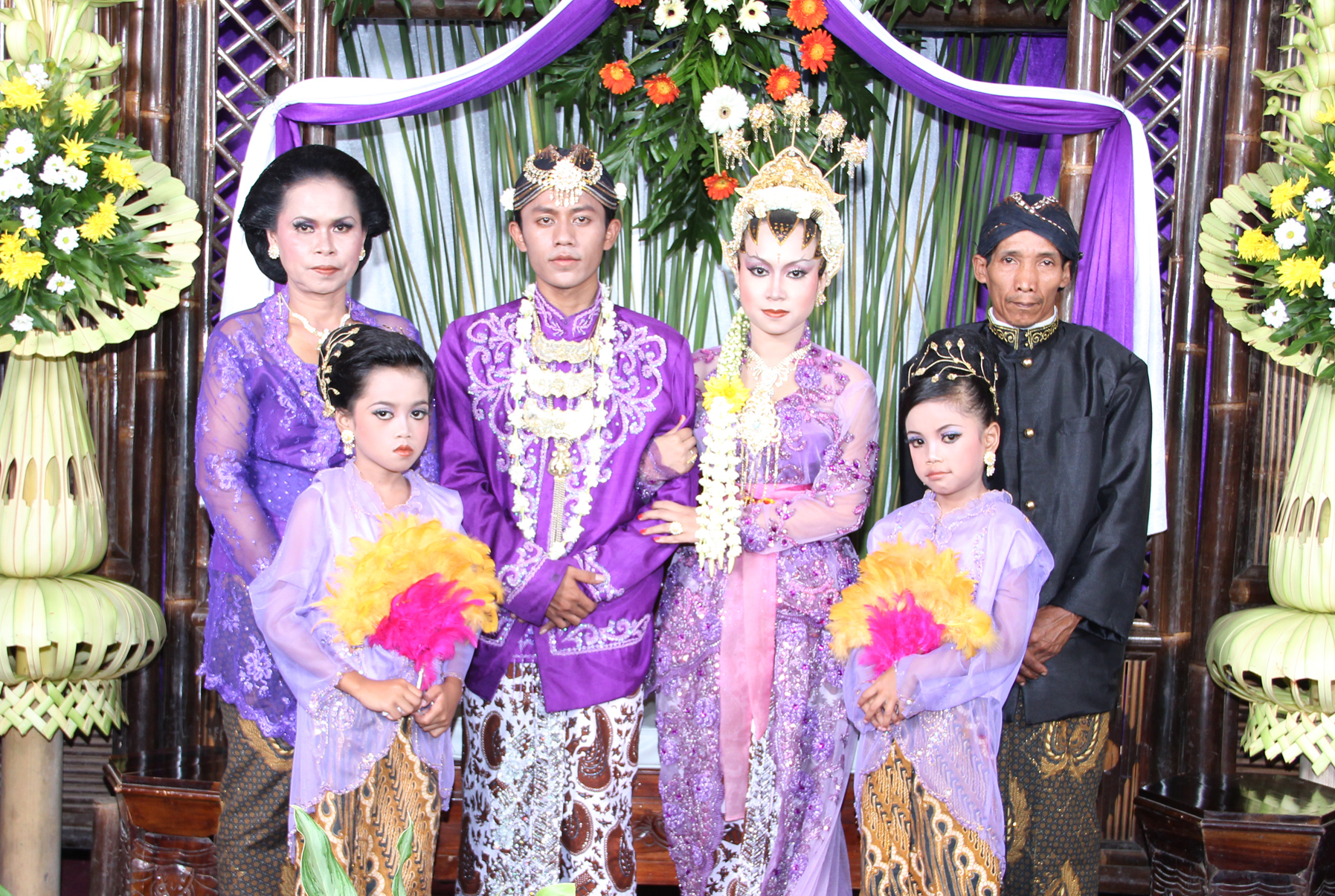Traditional Clothing Kebaya Central Java
Kebaya is a traditional blouse worn by Indonesian women are made of
thin material that is worn with a sarong, batik, or other traditional
knitted clothing such as songket with a colorful motif.Table of contents
1 History
2 Variations Kebaya
3 Kebaya and Politics
4 Use Kebaya Present
5 Footnote
6 External links
History

1 History
2 Variations Kebaya
3 Kebaya and Politics
4 Use Kebaya Present
5 Footnote
6 External links
History

Kebaya origin of the word comes from the Arabic abaya meaning the clothes, but another version called comes from the word "Kebyak" or "Mbayak" of the Java community. There is an opinion stating kebaya comes from China. Then spread to Malacca, Java, Bali, Sumatra, and Sulawesi. After acculturation which lasted hundreds of years, the clothing is accepted in local cultures and sensitivities. But there is also the opinion that the kebaya is native of Indonesia. Because the original clothing Cheongsam China is different from the kebaya. The earliest form of kebaya derived from Majapahit palace [1] worn by the queen or the king's concubines. as a means to integrate existing Kemban women, body wrap of aristocratic women to be more simple and acceptable to the new converts to Islam. Aceh, Riau and North Sumatra Johor and adopts the style of Javanese kebaya as a means of social expression status with Javanese rulers more alus or refined. Name kebaya as a particular garment has been noted by Portugal when it landed on Java. Kebaya Java, as it now has been noted by Stamford Raffles in 1817, as silk, brocade and velvet, with a central opening of the blouse fastened by a brooch instead of a button and button-hole at the top of the torso wrap tank, the fabric (and separate several meters long cloth wrap incorrectly termed 'glove in the UK (gloves (accent Malaysia: sarong) sewn to form a tube, such as Western clothes). [2] [3]variations KebayaCirca 1500-1600, on the island of Java, kebaya outfit is worn only Javanese royal family. Kebaya is also a family clothing worn Cirebon Sultanate, the Sultanate of Mataram and Yogyakarta Sultanate successors. During the period of Dutch control of the island, European women began wearing kebaya as formal wear. During this period, kebaya changed from simply using mori using silk fabric with colorful embroidery. Similar outfit called "mistress kebaya" was first coined by the Peranakan people of Melaka. They wear gloves and shoes with a gorgeous beaded called "shoe manek". Now, mistress kebaya is undergoing renewal, and is also well known among non-Asian women. Kebaya other variations are also used Chinese ancestry Indonesia in Cirebon, Pekalongan, Semarang, Lasem, Tuban and Surabaya.















woah
BalasHapus